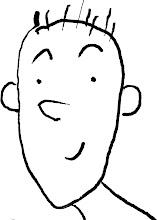In follow up from my previous post—never really thought there was a proper remedy for “Poo on My Shoe”. (POMS)… From eHow
 Yuck! Dog poop on the soles of your shoes is not only smelly and gross, it is not something you want tracking into the house.
Yuck! Dog poop on the soles of your shoes is not only smelly and gross, it is not something you want tracking into the house. Those of us with multiple dogs have learned a trick or two about cleaning dog poop out of the soles of our shoes.
Instructions
1. Step 1
If you are likely to step in poop when you go out to clean your yard, two things help. First, get in the habit of a daily poop pickup. Second, keep a pair of those plastic clogs by the door and use those for pickup duty. They are easy to hose off if you step in something nasty and you won't track any inside.
2. Step 2
If there is snow on the ground, hop up and down in it, moving around and stomping until you are not leaving brown tracks behind. If the poop is fresh this will get it right up.
Wiping your feet on grass can actually smoosh the poo into the treads of your shoes. Instead, jump up and down. Find a puddle or a hose, wash off your soles and continue jumping in clean grass until they get clean.
Wiping your feet on grass can actually smoosh the poo into the treads of your shoes. Instead, jump up and down. Find a puddle or a hose, wash off your soles and continue jumping in clean grass until they get clean.
3. Step 3
If none of this is feasible, you have to hold your nose and use warm soapy water and a brush. The hotter the water, the more that lovely aroma will drift up to your face so practice holding your breath! Leather shoes should be polished afterwards because the soapy water can dry out the leather.
4. Step 4
When all else fails or if the poop is starting to dry, use your dishwasher on the pots and pans scrub cycle. This works great on athletic shoes. I do suggest you empty out all the dishes first. Then put them in an old pillowcase along with a couple of fabric softener sheets and run them through the dryer.
This was posted as a handy tip… (for those that are proactive)
- Dogs fed cheap, high grain kibbles usually have softer and smellier poop.















